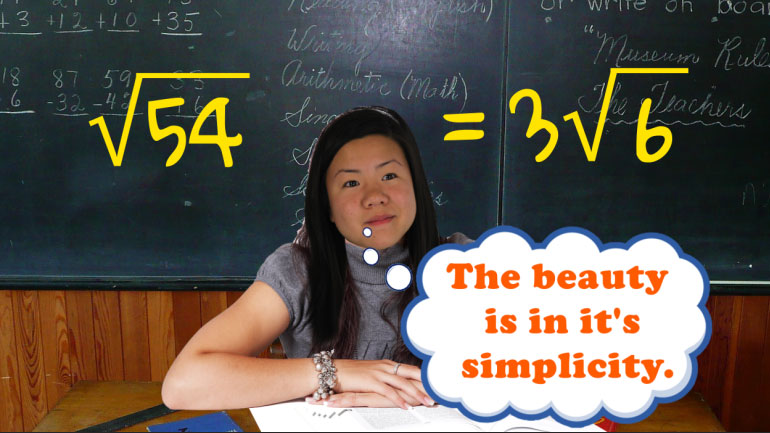ShmoopTube
Where Monty Python meets your 10th grade teacher.
Search Thousands of Shmoop Videos
Multiplying Polynomials 2 2327 Views
Share It!
Transcript
- 00:09
All right, Shmoopers, it's about time we had...the talk. Sometimes, when two polynomials love...
- 00:14
each other very much, well, they decide to multiply. Now...
- 00:19
we're gonna explain to you how that happens. We'll try to leave out most of the gory details. All right,
- 00:24
so say you have two polyn—and get your minds out of the gutter, people. All right, say you have two polynomials...
- 00:29
with multiple terms. Like there's an x cubed in there, and a couple of x squareds,
Full Transcript
- 00:34
some x's, and so on. Something like, well, these two. Well, to multiply...
- 00:39
them, we have to be sure to multiply every term in the first polynomial by every term in the second polynomial.
- 00:44
Okay? That's this, times this times this times this. Yeah, like that.
- 00:49
It's a delicate process. We miss a single term, and we could end up with a polynomial...
- 00:54
with three heads. It's been known to happen—ever see the people who live down the river? Yeah.
- 00:59
Okay, so we start with the 2x cubed in the first...
- 01:05
polynomial, and multiply it by every term in the second. So, 2x cubed times 4x squared is...
- 01:11
8x to the fifth. Add these things. 2x cubed times...
- 01:16
3x is 6x to the fourth.
- 01:19
Got it? So x is just x to the first, and we add it with x cubed...
- 01:25
And then 2x cubed times 2 is 4x cubed.
- 01:30
All right, then we move on to the second term, and the first polynomial, and do the same spiel.
- 01:35
3x squared times 4x squared is 12x to the fourth.
- 01:39
3x squared times 3x is 9x to the third.
- 01:43
And 3x squared times 2 is 6x squared.
- 01:47
Remember when you see an x, remember that's to to the one,
- 01:49
and when you're multiplying exponents, you add 'em.
- 01:51
All right, now for the third term in the first polynomial—this thing. Now don't forget the minus...
- 01:56
sign. That's gonna turn all our answers to your negative.
- 01:59
Negative x times 4x squared is negative 4x cubed,
- 02:03
negative x times 3x is negative 3x squared, and...
- 02:06
negative x times 2 is negative 2x.
- 02:09
Okay! Last one.
- 02:11
7 times 4x squared is 28x squared.
- 02:15
7 times 3x is 21x,
- 02:17
and 7 times 2 is 14. Okay, great!
- 02:20
So now, we have....this. Yeuch, what a mess.
- 02:24
No wonder people cringe when they, uh, have the talk and hear how this stuff works.
- 02:29
But we can make it much, much prettier. We just have to combine like terms.
- 02:34
We only have one term to the fifth power, so we can leave that one as it is.
- 02:38
Then we add these two guys, then these three, then...
- 02:41
these three, then these two, and this last one gets...
- 02:44
left as is, too. But we finally just string them all together,
- 02:48
to get 8x to the fifth, plus 18x to the fourth, plus...
- 02:52
9x to the third, plus 31x squared, plus 19x, plus 14...
- 02:56
And a partridge in a pear tree. Yeah, like that. All right, so...
- 03:00
a little more complicated than their parents, but you can still see some similarities.
- 03:04
When multiplying three or more polynomials? Same deal. Just takes...
- 03:08
a little more time. You'd multiply the first two polynomials the way you usually would,
- 03:12
and then take that answer and multiply it by the next polynomial in line.
- 03:16
Oh, be careful, though, it's only legal in some parts of the red states.
Up Next
We don't like knocking people down to size, but we do like simplifying radicals. Join us?
Related Videos
If fleeing criminals always fled the scene of the crime at perfect right angles, it would be much easier to determine their whereabouts. Fortunatel...
Okay, so this probably isn't going to help you master Pokemon Go, but game theory can be applied to all sorts of situations. Even stomping your old...
Today's video is about calculating central tendency. We'll lay out outliers and make means...meaningful.




